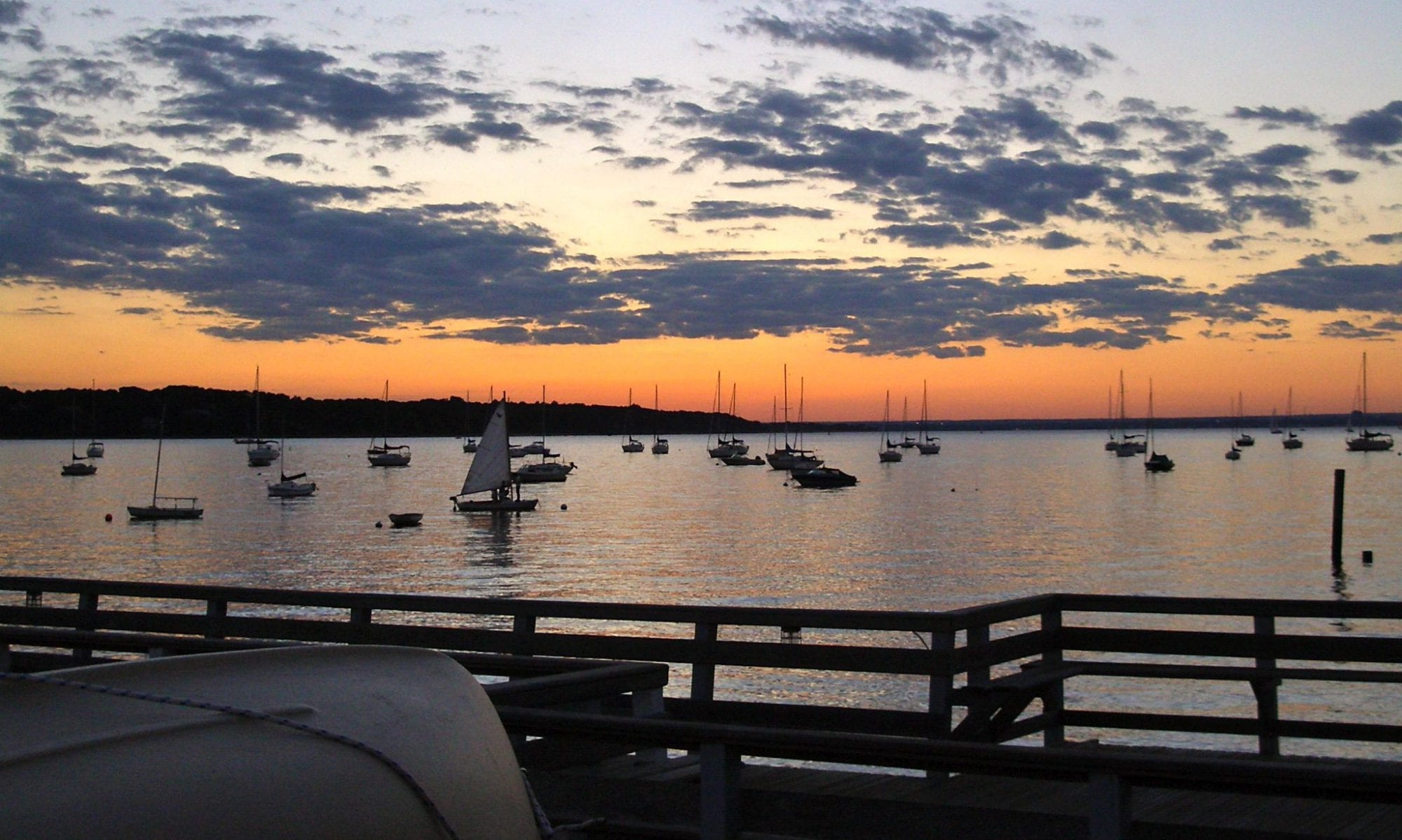Many of us see seaweed as little more than a nuisance (hence its name). But can seaweed help clean our local waterways? A project over the last year in Oyster Bay Harbor seeks to find out.
But first the backstory. Excess nitrogen is one of the major concerns these days for our harbors and bays. Too much can lead to algae blooms, some of which are toxic to humans. Those blooms can also lead to fish kills as the decaying algae use up oxygen in the water. At the same time, and on a larger scale, there is the issue of carbon dioxide emissions. While the oceans take up much of this C02, it also causes a chemical change in the waters’ acidity, which in turn causes a decrease in carbonate ions which many marine species (like shellfish) use to build their shells and skeletons. Worldwide, ocean surface waters have become 30% more acidic over the last 150 years.
Enter Dr. Aaren Freeman, a professor at Adelphi University, a scientist who has been studying kelp for decades. With the help of a grant from the National Fish and Wildlife Foundation, he grew kelp at three locations in Oyster Bay Harbor over the last winter (it only grows here in the winter) – at the Theodore Roosevelt Marina in Oyster Bay, at the Bayville Marina in Mill Neck Creek, and at the Village of Laurel Hollow beach. He is also growing it at other locations on the south shore.
Since marinas are usually empty during the winter, they provide an ideal location, as they need to be harvested before the next boating season.
Kelp, which was native to Long Island waters and once widespread, only exists naturally in a few areas today due to development along the shoreline. He plants it on long lines where it grows rapidly (from 2 millimeters in size to up to 18 feet long by Spring). It is one of the fastest growing plants in the world.
“I planted the kelp on lines back in December of last year at four sites and it has been growing quite well,” said Dr. Freeman. “The major interruption that the coronavirus caused is figuring out how to sample and harvest the kelp.”
The kelp harvested will be used in a fertilizer study run by Hofstra University in collaboration with the Long Island Nitrogen Action Plan (LINAP) and the Town of Hempstead.
The kelp sequesters nitrogen (70-80 kg/ hectare with lines spaces every 1.5 meters), which can then be used as a fertilizer when dried (which takes 36-48 hours). He has been drying it at the Town of Hempstead’s greenhouse. Students are looking at whether it takes up harmful quantities of heavy metals like arsenic and copper and pathogens like vibrio. For that reason, it is not marketed as a food product here at this point.
In some places, it is also used as a skin care product. Right now there are no markets. He expects to have a report by the end of the year, although that may be extended.
Dr. Freeman is not the only scientist farming and studying kelp for its impact on the environment. At the University of Connecticut, Dr. Charles Yarish has also been doing the same, but on a larger scale. He was even featured on 60 Minutes with Lesley Stahl. Dr. Yarish views kelp farms as the equivalent of forests in the water, as they are able to take up a large amount of CO2 as it is needed for their rapid growth. He has been growing shellfish in his kelp beds to see if they can do better at building their shells. The results are not in yet. He is also adding baby mussels on lines suspended in his kelp beds.
The bottom line is that we need to tackle water quality issues like nitrogen from many angles – such as installing state-of-the-art nitrogen reducing septic systems, reducing the amounts of nitrogen in fertilizer, or removing it from the water with kelp, all of us can play a role.
